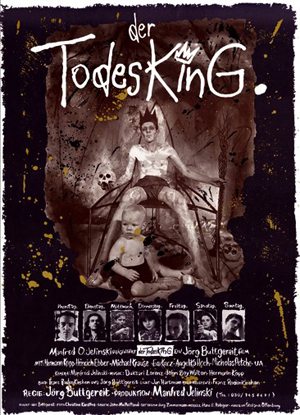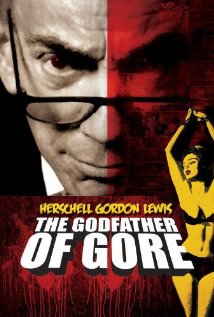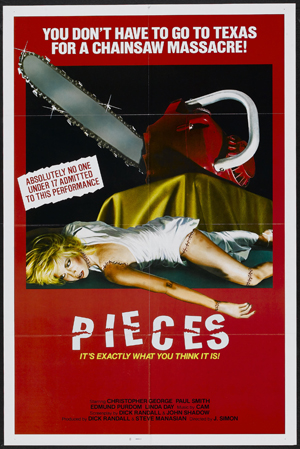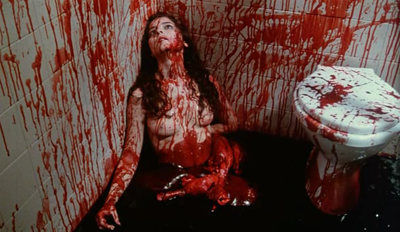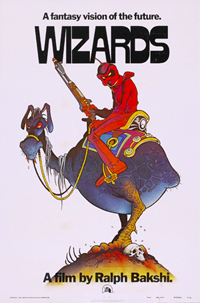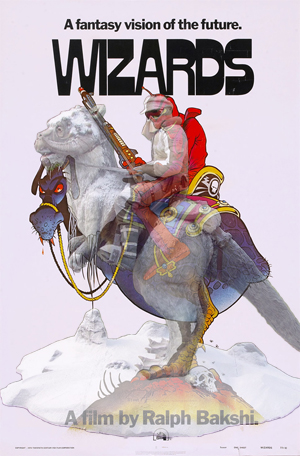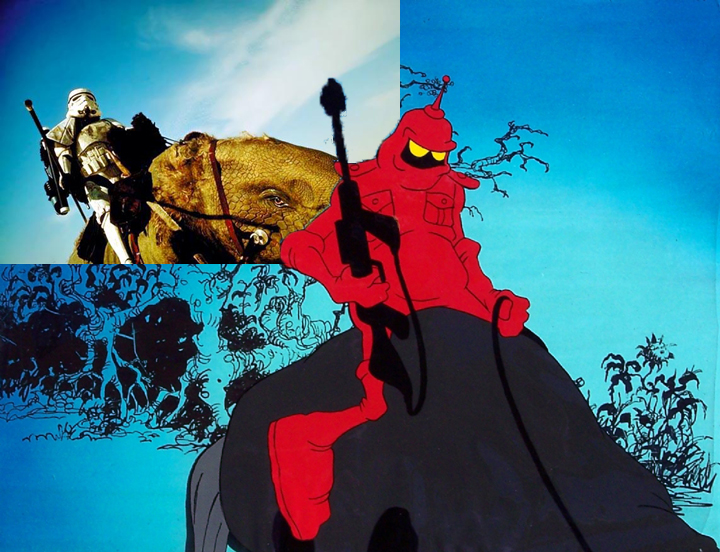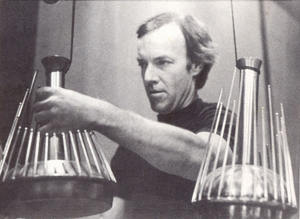|
Part documentary, part early form of mockumentary, I Am Curious (Yellow) was part of the emerging new wave of Swedish cinema in the late 1960s. Originally conceived as a 3 and a half-hour epic, the film was split into two companion films named Yellow and Blue, after the colours of the Swedish flag.
The film tells the story of Lena, as she goes on a journey of self discovery, followed by a film crew. With the director Sjöman documenting himself, documenting Lena. Lena builds an archive of her life, and her discoveries, as the film explores social and political themes of the period. Blurring the lines between fact and the fictional life of Lena, through interviews with people on the streets, and even an interview with Dr. Martin Luther King Jr., while he was on a visit to Sweden. The film's frank portrayal of Lena's sex life caused controversy on the film's release. With graphic nudity and simulated sexual intercourse and oral sex, the film came to the attention of the censors. |
|
Though I Am Curious (Yellow) is a stand alone film, it is best viewed alongside I Am Curious (Blue), as the companion film fills in the narrative of the first. One making sense of the other. I Am Curious (Yellow) is the most well known of the two films, and is a film very much of its time. The controversy that surrounded it may seem an over-reaction when views through contemporary eyes. But it is an important film, not only of Swedish and to a larger extent European arthouse cinema, but as a snap-shot of the counterculture and socio-political movement of the late 1960s. And it is for that reason, rather than the infamy that surrounded the film, that it is deserving of its status as one of the key cult films of its period.
0 Comments
Lewis and Friedman entered wanted to tap markets that their nudies couldn't or wouldn't reach, andso in 1963 they made Blood Feast. Now a cult classic, that is considered by many to be the first ever "gore" movie. The simply buckets of blood and cheap special effects trickery found a willing and ready market, especially in the drive-ins. So the pair followed up Blood Feats with Two Thousand Maniacs! (1964) and Colour Me Blood Red (1965). They'd hit on a formula, and they were going to milk it for all it was worth. As soon other exploitation film-makers picked-up on the movies Lewis was making, and started making their own gore movies. After Colour Me Blood Red, Lewis and Friedman stopped working together, but Lewis continued to make gore movies. His next were A Taste Of Blood and The Gruesome Twosome, both 1967. He still continued to make nudie and softcore movies, as well as a couple of children's films. But it is his gore movies that he's most well known for. He started using the word in the titles of his movie. In 1968 he made Doctor Gore (also known as How To Make A Doll), followed by 1970's The Wizard Of Gore, and in 1972 Gore Gore Girls. Most recently after a gap of nearly 40 years, in 2002 he made a sequel to Blood Feast, Blood Feast 2: All U Can Eat.
Wizards? War Wizards? Star Wars? Or Conclusive Scientific Evidence That George Lucas Is A Twat!31/3/2015
After Bakshi explained to little George, that actually "War" and "Wars" were even more similar, Bakshi decided to just call his movie Wizards. And because he couldn't stand by and let George hold his breath until he got his own way, and eventually went blue in the face a fainted. To add insult to injury though, it would turn out that little Georgie Porgie would not rip-off everything he'd seen as a child to make Star thingy-what's-it, and its sequels. It would seem it had a thing deep down about Wizards after all. Not only did he directly rip-off The Wizard Of Oz. Tin-Man / C3PO, Wicked Witch of the West / Darth Vader, Cowardly Lion / Chewbacca , yeah you all know, I don't need to go on. He screwed over poor old Ralph Bakshi as well. With the aid of high-tech modern wizardry (Google and Photoshop), we can now finally reveal how Georgie directly copied the most iconic images of Wizards. Luke on the back of a tauntaun in Empire Stirkes Back, and the Peace on the back of his way too similar two-legged mount in Wizards. Now come on, there's no denying there's an influence there.
Macabre was not only Castle's first independent movie, but also the first that he would employ the kind of gimmick he would be become so well known for. Audience members were given an insurance policy certificate, backed by Lloyd's Of London, that ensured them against frightened to death for $1000. What followed were two b-movie horrors a year, each with its own unique promotional gimmick twist.
By the late 60s, Castle decided he wanted to direct a movie of artistic worth, managing to acquire the film rights to the Ira Levin novel Rosemary's Baby, before it was even published. This he felt was his chance, and he struck a deal with Paramount Pictures. However Paramount insisted that the new darling of European cinema, who had recently moved to the United States, Roman Polanski directed the movie. Castle agreed, and took on the role of producer. The movie was a huge success, but unfortunately Castle was unable to capitalise on the success, as he suffered kidney failure soon after the movie's release.
The moment was lost for the king of promotion, and Castle went back to directing and producing b-movie horror and sci-fi. His last role as director being the 1974 movie Shanks, which was the first major movie role for famed French mime artist Marcel Marceau. The last movie that Castle produced before his death in 1977, was Bug in 1975. Even as producer, it was a last return to form for the king of the gimmick, when he advertised that he'd taken out a million dollar life insurance policy on the movie's star "bug", Hercules the cockroach. On May 31st 1977, William Castle succumbed to a heart attack and died, leaving a legacy of irreverent b-movies and a reputation for being one of the greatest movie promoters in b-movie history.
Kim Jong-il was an obsessive movie fan, said to have thousands of movies he watched avidly. He even had propaganda painting done of him directing movies, and in 1973 wrote a book called On The Art Of Film. Shin San-ok and in 1978 his then ex-wife Choi Eun-hee had been the darlings of the early South Korean movie industry. He'd been described as "the Orson Welles of South Korea." Eun-hee travelled to Hong Kong to discuss a part in a movie she'd been offered, but simply disappeared. San-ok, worried for his ex-wife followed after her, and fell into the trap set-up by the North Korean regime. The couple wouldn't be reunited for another 5 years. Eventually brought back together at a dinner in Pyongyang, after San-ok had spent years in a North Korea prison for an escape attempt, Kim Jong-il lavished money and resources on them, under his plan to make the North Korean movie industry a great propaganda machine for his country. In total San-ok made seven movies under the watchful eye of Kim Jong-il, who acted as executive producer. But the one movie that stands out is the 1985 Godzilla style monster movie Pulgasari. Loosely based on medieval Korean folklore, it tells the story of a giant monster that leads a farmers revolt on the king. But the monster eventually turns on the people, until a peasant girl pleads with him to stop. Finding his conscience, Pulgasari explodes into a thousand pieces, and gives birth to a new "regime". Sorry I mean, "monster". There is an allegory hidden in the wonderfully terrible movie. It can be read, that even under the strict "guidance" of Kim Jong-il, San-ok was making a political statement about the North Korean regime. That the monster Pulgasari was a metaphor for the Kim dynasty in the country.
So much so, that in 1986 Shin San-ok and Choi Eun-hee were allowed to travelled overseas to promote the movie. They went to the Vienna film festival, and a plan of escape formed in their heads. With the help of a Japanese film critic friend who they met for lunch, they managed to abscond from under the watchful eye of North Korean agents, and make it to the United States embassy. Thus ended the ambitions of Kim Jong-il to create a movie industry of international standing in North Korea, and Pulgasari disappeared into the shadows of cult film history. Eventually in 1998 it was briefly released, after campaigning from another Japanese film critic, and likely Kim Jong-il's secret desire to see this "master piece" seen by a wider audience. The movie bombed, but has since become a cult film among fans of monster movies. Personally I love Pulgasari, it's probably my favourite movie of the Kaijū genre. As terrible as it is, it holds a certain fascination, which is enhanced by the knowledge of how its production came about. And much better than the South Korean equivalent movie Yongary, from 1967.
Weird Retro Fact: Read the side-by-side comparison of the two Korean movie monster, in our article Yongary Vs. Pulgasari: The Korean Movie Monster.
One of Landow's most well known pieces of film is called "Film in Which There Appear Edge Lettering, Sprocket Holes, Dirt Particles, Etc." (1966). It was made using found footage, a technique he would often employ. In this case, a strip of film used by the Kodak company to as a "leader" test colour reproduction. The original short piece of film was looped, so that it lasted 6 minutes. On first screening, it had to be stopped part way through due to adverse audience reaction. The more the film was played on its loop, the more it would collect dust and scratches, which Landow would sometimes stand-up and point out at screenings.
|
Archives
November 2015
Categories
All
|
